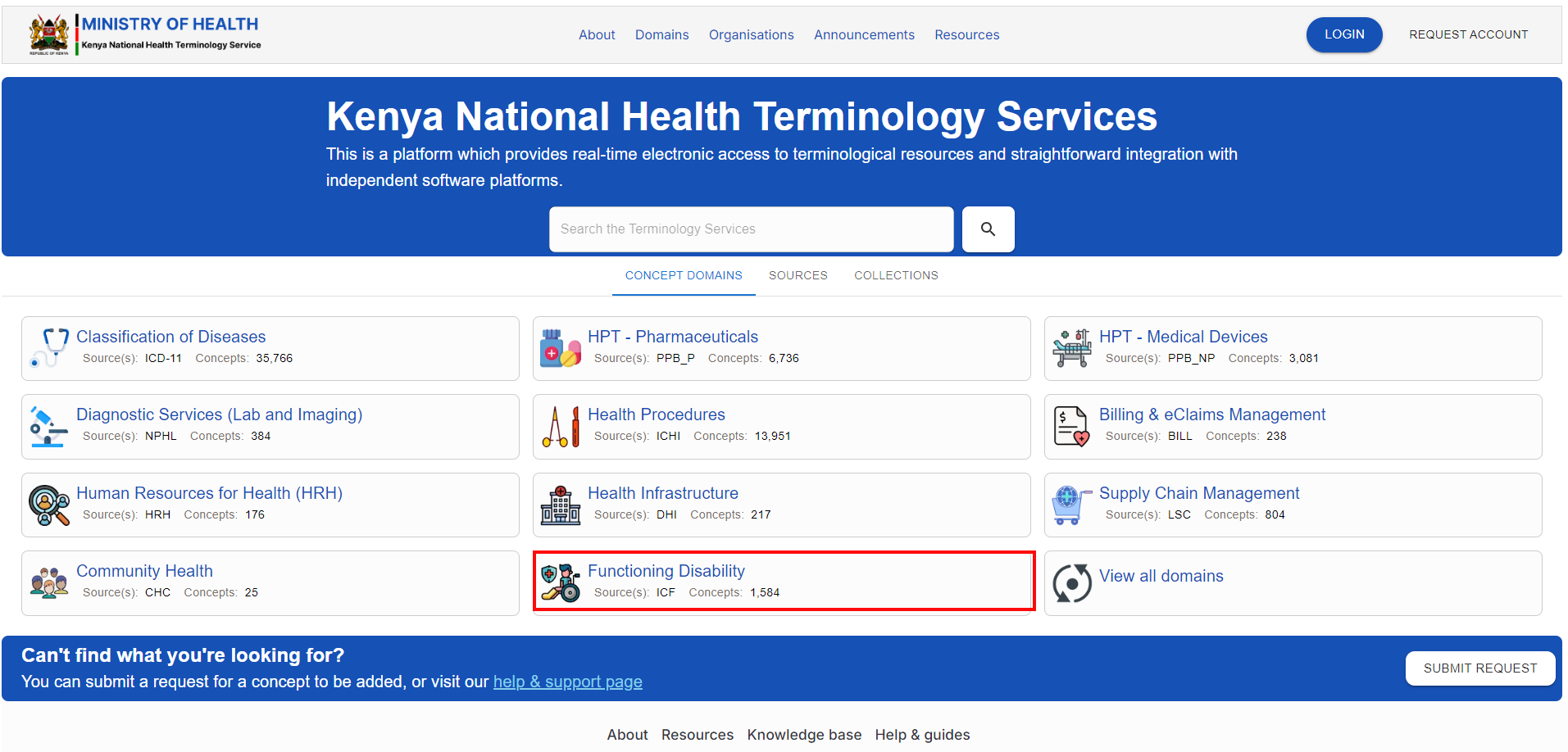Functioning Disability
The Functioning and Disability domain in KNHTS encompasses concepts related to the assessment, classification, and management of individuals' functioning, disabilities, and health-related conditions. This domain is closely aligned with frameworks like the International Classification of Functioning, Disability, and Health (ICF) developed by the World Health Organization (WHO).
The concepts ideally are grouped into the following categories:
- Core Concepts:
-
-
Body Functions and Structures: Concepts under this category deal with the physiological functions of body systems (e.g., neurological, musculoskeletal) and the anatomical parts of the body (e.g., organs, limbs). This includes both normal and impaired functions/structures, capturing a range of conditions from disabilities to impairments.
-
Activities and Participation: This involves concepts related to an individual's execution of tasks and involvement in life situations. It encompasses both limitations in performing daily activities (e.g., mobility, communication) and restrictions in participating in social, work, or educational activities due to health conditions.
-
Environmental Factors: Concepts that influence a person's experience and functional abilities, including the physical, social, and attitudinal environment. This could cover everything from accessibility features (e.g., ramps, handrails) to societal attitudes towards disabilities.
-
-
Assessment and Classification:
-
Disability Assessment: Concepts related to tools, scales, and methodologies used to assess the extent and impact of a disability. This includes functional assessments that determine how a health condition affects a person's ability to perform everyday activities and participate in society.
-
Classification of Disabilities: Concepts used to categorize and classify different types of disabilities based on the ICF or other standards. These classifications help in identifying the type and degree of disability, enabling appropriate interventions and support.
-
-
Intervention and Rehabilitation:
-
Rehabilitation Services: Concepts related to services and interventions aimed at improving or restoring functioning, such as physical therapy, occupational therapy, and speech therapy. These services help individuals achieve and maintain optimal functioning despite disabilities.
-
Assistive Devices and Technology: Concepts covering tools and technologies that assist individuals with disabilities in performing tasks. This can include mobility aids (e.g., wheelchairs, prosthetics), communication devices, and other supportive technologies that enhance independence.
-
-
Health and Social Care Integration:
-
Multidisciplinary Care: Concepts that emphasize the integration of various healthcare and social care professionals in managing and supporting individuals with disabilities. This may include care plans, case
-
management, and coordinated services across different sectors.
-
Social Inclusion: Concepts that focus on the societal aspects of disability, promoting inclusivity and equal opportunities for individuals with disabilities. This includes policies, programs, and initiatives aimed at reducing barriers and improving participation in society.
-
-
Quality of Life and Well-Being:
-
Quality of Life Measures: Concepts related to assessing the impact of disability on an individual's overall quality of life. This includes factors such as physical comfort, psychological well-being, social relationships, and the ability to pursue meaningful activities.
-
Support Networks: Concepts covering the role of family, community, and social support systems in the lives of individuals with disabilities. These networks play a crucial role in enhancing coping mechanisms, providing emotional support, and facilitating access to resources.
-
These concepts are sourced from International Classification of Functioning, Disability and Health (ICF)
To access the domain, navigate to the KNHTS Homepage and select the highlighted domain below
Refer to the Classification of Diseases page in this user guide to see navigate around and perform actions related to concepts


No Comments